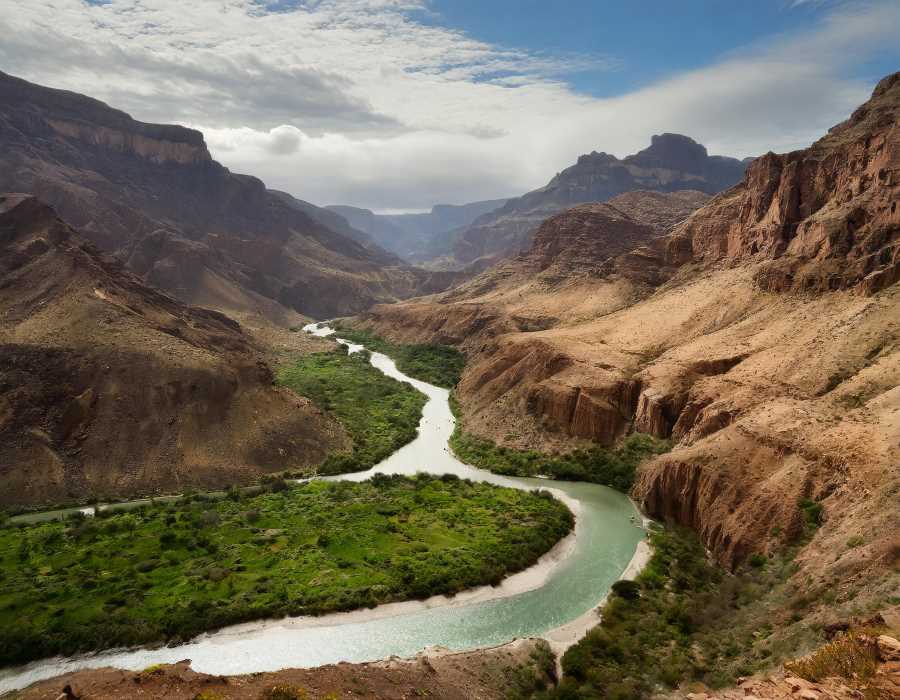How Sonora's Plants Survive the Heat
Scientists unlock secrets of Sonoran plants thriving in extreme heat. Using pressure chambers, they measure water potential to understand how plants conserve moisture. This research could be key to mitigating climate change by predicting future ecosystem behavior in arid regions.

With the purpose of having a future application to effectively mitigate the effects of climate change, a team of researchers and students from the Earth Systems Ecophysiology Laboratory (LEET) of the Institute of Ecology (IE), UNAM, carries out work field with new species of plants distributed in the flora and fauna protection area in the Sierra de Álamos-Río Cuchujaqui, Sonora, an area where, in addition to plant species, animals such as the leopard or ocelot, puma and jaguar are preserved.
How do plants survive in semi-arid regions of Sonora where temperatures sometimes exceed 40 degrees Celsius? What basic mechanisms do these plant species develop to conserve and distribute the scarce humidity that reaches their structures? To find out, they carry out field campaigns in that Protected Natural Area of Sonora.
It is located near the magical town of Los Álamos, where the limit of the low deciduous forest is located, since desert ecosystems prevail to the north of that region,” explained in an interview to the IE researcher who heads the LEET, Tonantzin Tarin Terrazas.
At the site, Tarin Terrazas and his collaborators (three researchers from the Technological Institute of Sonora, eight students and two postdocs from this university and the UNAM), measure directly in the arms of the plants the pressure that increases due to the lack of humidity and decreases in its presence.
“The pressure is called water potential, and it describes the mechanisms of plant physiology of plants; “It tells us what strategy they follow to survive in the presence or absence of humidity,” she commented.
In their work, scientists use a portable pump called a Scholander-type pressure chamber, similar to a human blood pressure meter. “We take three of these pumps to the field and take samples of the nine predominant species in the ecosystem, but we must do it at dawn, before the Sun rises, which is when the plants have accumulated moisture during the night,” she added.
Subsequently, more samples are taken every two hours, and it is perceived that the water potential begins to become negative, revealing the physiological behavior of the plants.
Basically, it is a force that is measured with pressure units such as the Bar and the Magapascal. We do it with a pressure pump into which air is injected, and inside it is a sample that we take from the leaf or a piece of branch of the plant. The sample is cut and must be measured immediately, which is why the pump is taken to the field to calculate the water potentials directly, the scientist described.
The specialist highlighted that the more pressure is needed to move the water contained in the plant, it means that it remains more stressed or dehydrated.
In the study, scientists group them by identifying which are perennial, deciduous, legumes, as well as which reach the groundwater to access water, or which depend solely on summer rain.
The species under study are the most dominant in the region, but there are more. “We try to understand not only how each species works but also how this physiological behavior helps us explain the behavior of the ecosystem.” We want to understand how the ecosystem is resilient to environmental factors and the lack of availability of the vital liquid, said Tarin Terrazas.
Although it is basic science, this work (supported by a PAPIIT Program for 2022 and 2023) could have a future application to effectively mitigate the effects of climate change in that study region.
“It also helps us scale from what happens in a plant to what happens in an ecosystem, as well as modeling to propose various future scenarios in the face of climate change when, for example, it rains fewer millimeters than expected in a certain season,” ended.




